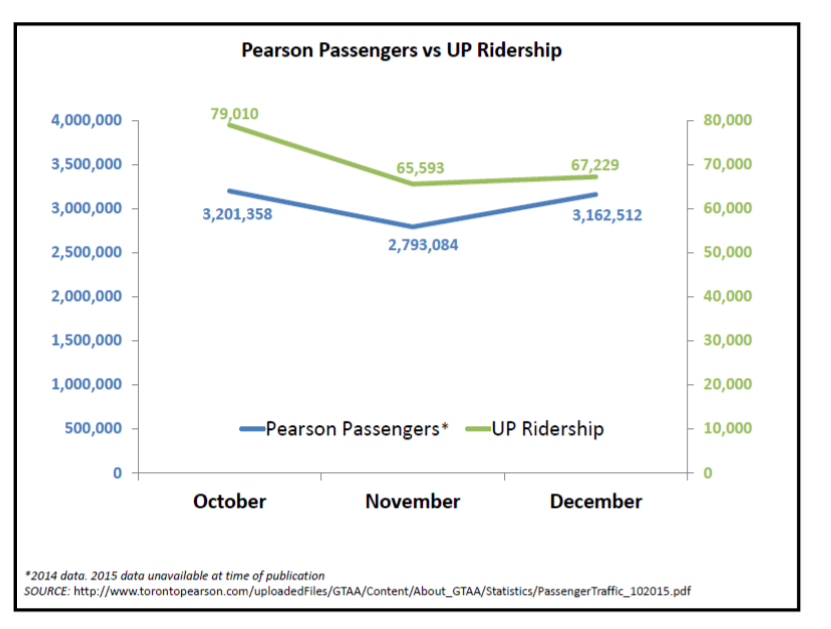Transportfan
Senior Member
What I don't get is why UPX is so unsuccessful (even after the fare drop) if other cities have successful airport trains.
What I don't get is why UPX is so unsuccessful (even after the fare drop) if other cities have successful airport trains.
I don't think trains to airports are inherently successful, some do better than others, but the ambigious attitude of GTAA didn't help (wanting to grab revenue from it themselves before being forced to back off). Compare to Heathrow where the airport is directly involved in Heathrow Express and more density at the far end (whereas even with all the development downtown, most YYZ passenger growth above present levels expected from 905/519).What I don't get is why UPX is so unsuccessful (even after the fare drop) if other cities have successful airport trains.
I wonder if the dream of UPX as a private entity ever died, even after transfer from the feds to Metrolinx. The problem for Metrolinx is that it's harder to claim difficulty in quantifying UPX losses vs GO Transit when such separation has been maintained.This is what offends me about the whole thing, more than price. I can buy experimenting with price points, and I can buy premium fare. What I can't buy is creating a separate business unit, which is likely more costly than having the GO organization operate the service using its existing business functions. It breeds a 'we are special" mentality. Which leads to weakened governance. And redundant positions in the same organization who don't work to similar expectations or policy. Which leads to unjustifiable items on expense accounts, etc, etc.
- Paul
The problem for Metrolinx is that it's harder to claim difficulty in quantifying UPX losses vs GO Transit when such separation has been maintained.
So unsuccessful? Ridership is a bit below target - but does seem to be slowly climbing (I wouldn't take those September/October higher numbers too seriously, given the reports of how many people were using it after Blue Jays games).What I don't get is why UPX is so unsuccessful (even after the fare drop) if other cities have successful airport trains.
Even though Pearson passenger numbers fluctuate, it looks like the proportion of Pearson passengers delivered by UP isn't increasing (if anything, this short period shows a decrease):

there are already commuter trains on the line to use.its simply because people would rather use the line as a commuter line which I too would like to see.
Not after 7pm, and not at all on weekends, and it's only hourly.there are already commuter trains on the line to use.
oh...I know that very well but just because GO has failed to capitalize fast enough on the $1.3b they have spent (over and above the UP cost) on the corridor is no reason to condem the UP...it is a reason to call for more GONot after 7pm, and not at all on weekends, and it's only hourly.
oh...I know that very well but just because GO has failed to capitalize fast enough on the $1.3b they have spent (over and above the UP cost) on the corridor is no reason to condem the UP...it is a reason to call for more GO